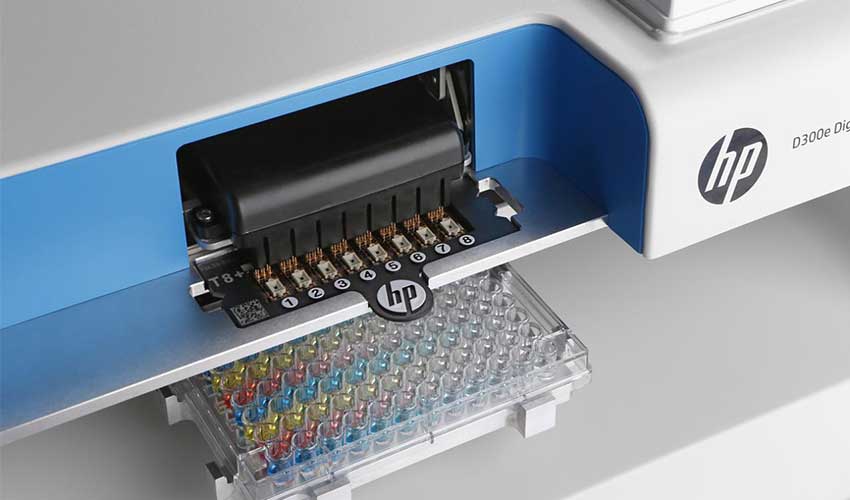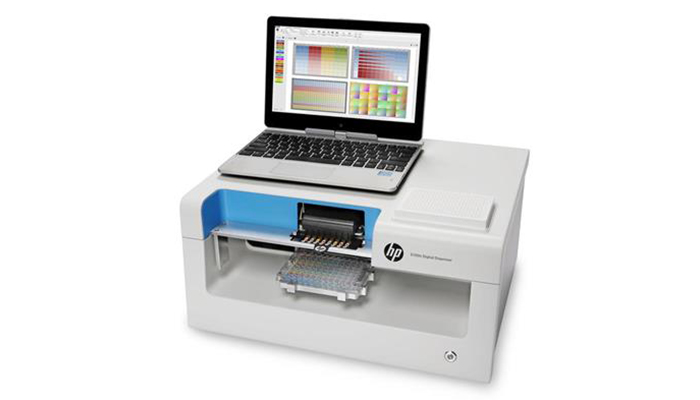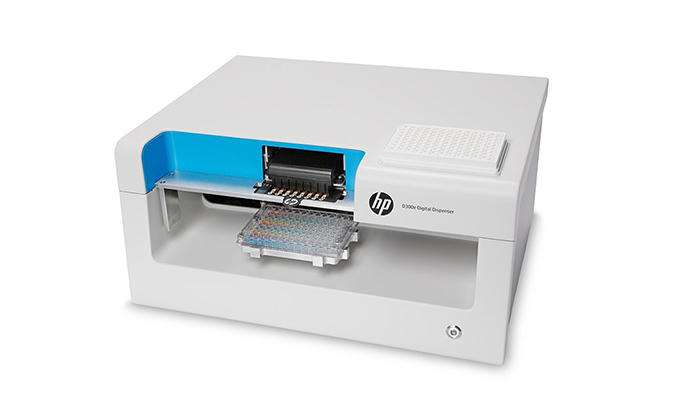HP BioPrinter; the dispenser that will bioimpress antibiotics

We have seen the US giant go way opening multiple sectors within the additive manufacturing from 3D color printing to 3D metal printing. Just recently they announced their new HP Metal Jet plans coming up. But it is not their only announcement this year. They opted for bioprinting with the HP BioPrinter. Although technically it is not a 3D bioprinter, and it reminds us more of the origins of this technique. This could potentially lead to the giant entering a new sector.
For several years now, the World Health Organisation has declared itself on alert. Partially by showing that the self-medication of antibiotics and incorrect prevention of infections has allowed many bacteria to evolve and become immune to drugs. Something that threatens to return us to the preantibiotic era. Because of this, the Center for Disease Control and Prevention (CDC) and HP have developed new bioprinted antibiotics that will combat this resistance.

HP D300e Digital Dispenser BioPrinter. Via HP
The 3D printed drugs have been known for some years. They were released when the drug Spritam created with additive technology was accepted into production as a specialised treatment of epilepsy manufactured by Aprecia. From these developments many more have been released such as the 3D printing of what will be the “all-in-one drug”. Like the Multiply Labs project; the personalised food supplies created with 3D printing, which release vitamins at selected times within our body.
HP BioPrinter, the development of bioprinted antibiotics
Infectious diseases with resistant organisms caused by antibiotics are difficult to treat. Often such cases require alternatives that can damage the patients’ bodies. With the help of the HP BioPrinter and the CDC’s investigations, they hope to print antibiotics to stop the spread of the bacteria.
“Bacteria continuously develop new ways to resist antibiotics—once a drug is approved for use, the countdown begins until resistance emerges.” a statement maid by Jean Patel, PH.D. D (ABMM), Science Team Leader, Antibiotic Resistance Coordination Unit and Strategy at the CDC. And he continues “…To save lives and protect people, it is vital to make technology accessible to hospital labs nationwide. We hope this pilot will help ensure our newest drugs last longer and put gold-standard lab results in healthcare providers’ hands faster.“

HP D300e Digital Dispenser BioPrinter. Via HP
With the digital dispenser or the HP BioPrinter D300e, still in the testing phase, researchers have managed to properly analyse the behaviour of antimicrobial bacteria to obtain the most effective bioprinted antibiotics. Its function is performed in a very similar way to a common ink printer. In this case, the HP BioPrinter D300 dispenses volumes of picoliters to microliters of small molecules for drug discovery and research in microbiological structures.
Although HP has not yet declared that it will present a 3D bioprinter, it has already been adopted for different investigations. The CDC plans to introduce it into its Antibiotic Resistance Laboratory Network (AR) in four regional areas in the US. In addition, the pharmaceutical company Gilead, based in California, is using the HP BioPrinter to develop tests against the Ebola virus. Will we see a full-fledged HP bioPrinter by 2019?
For more information do not miss the next video or visit the official website of HP.
What is your thoughts on the initiative of the HP BioPrinter? Let us know in a comment below or on our Facebook and Twitter pages! And remember to sign up for our free weekly Newsletter, to get all the latest news in 3D printing send straight to your inbox!






